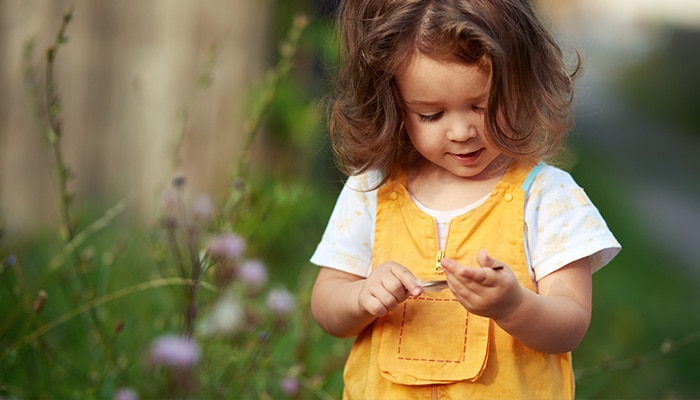While we believe that the books and resources recommended may be of value to you, keep in mind that these are suggestions only and you must do your own due diligence to determine whether the materials are appropriate and suitable for your use. PNC has no sponsorship or endorsement agreement with the authors or publishers of the materials listed.
OUTDOOR CLASSROOM

Wondering About the Wind
Children will experiment with the wind's effect on objects.

Lesson Objective
Children will experiment with the wind’s effect on certain objects and understand that wind is moving air.
Science
What You'll Need
Note: This lesson requires taking the children outside on a windy day.
- Feathers
- Bins filled with various objects, such as ping pong balls, small rubber balls, crayons, blocks, marbles, and leaves – 1 bin per group
- Rocks – 1 per bin
- Chart paper
- Marker
What To Do
- Display a feather, and ask the children what they could do to make it move.
- Ask them: If the feather were taken outside, is there something outside that could make it move (the wind)?
- Explain that even though we cannot see the wind, we can feel it because wind is moving air (see Did You Know?).
- Ask the children if they have seen the wind move anything else (trees, leaves, grass, birds, etc.).
- Display the objects in one of the bins, have the children identify each object, and write the name of the object on the chart paper.
- Have the children make predictions about whether the wind will be able to move each object.
- Record predictions on the chart paper.
- Tell the children that they will be going outside to experiment with the wind’s effect on the objects.
- Place children in small groups, and take them and the bins of objects outside.
- Allow the children to experiment with the objects in the wind (see Guiding Student Inquiry).
- Upon returning to the classroom, compare the children’s predictions with their results.
- Discuss the children’s discoveries (see Did You Know?).
Resources
Home School Resources
Home educators: use these printable lesson PDFs to teach this lesson to your home schoolers. They're available in English and Spanish.
Content Provided By
Common Core State Standards Initiative – These lessons are aligned with the Common Core State Standards ("CCSS"). The CCSS provide a consistent, clear understanding of the concepts and skills children are expected to learn and guide teachers to provide their students with opportunities to gain these important skills and foundational knowledge [1]. Visit the CCSS



